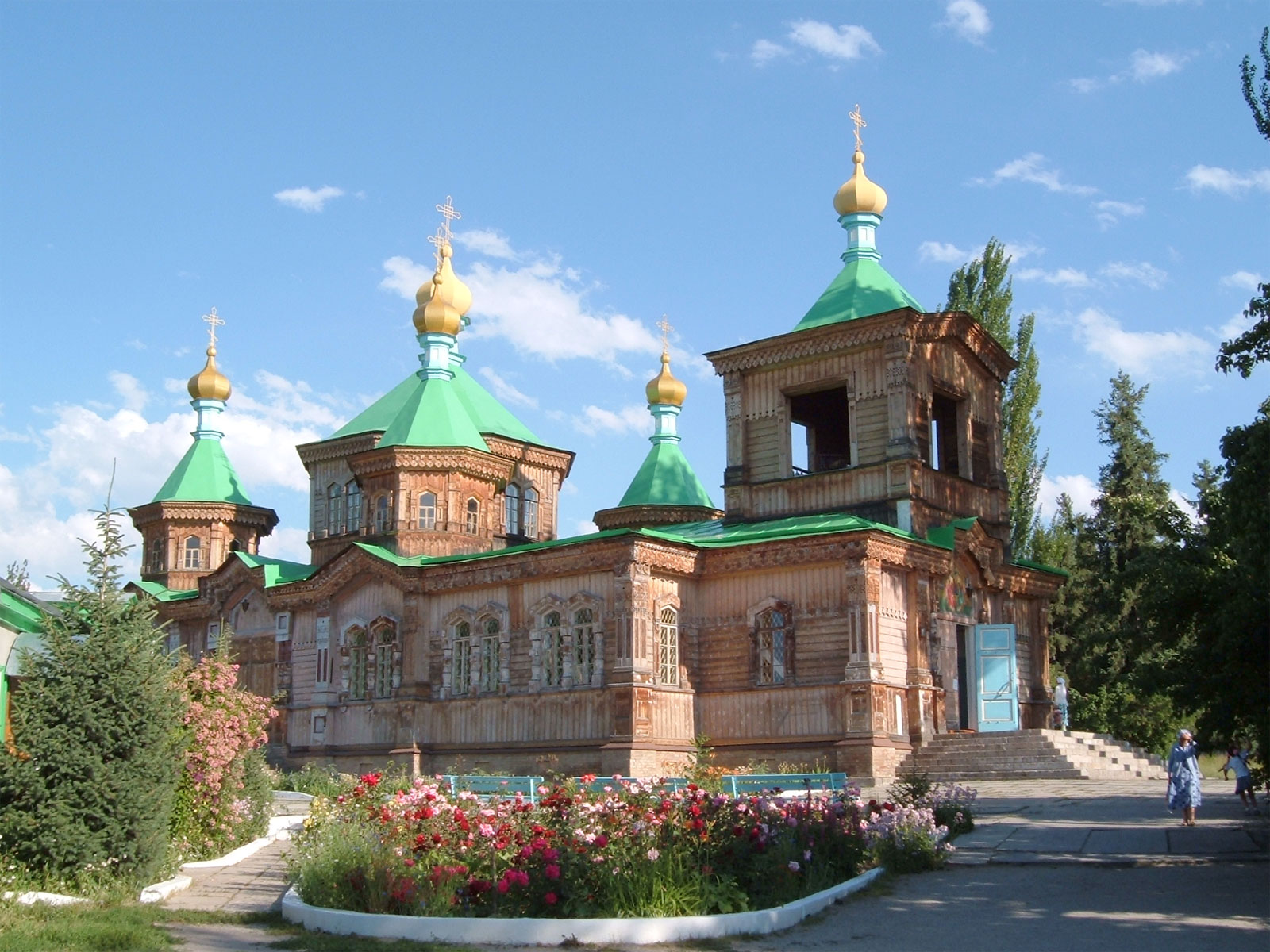- Karakol
Infobox Settlement
official_name = Karakol
native_name = Каракол
imagesize = 300px
image_caption = TheRussian Orthodox Holy Trinity Cathedral in Karakol
image_
map_caption =
pushpin_
pushpin_label_position =bottom
pushpin_mapsize = 300
pushpin_map_caption =Location in Kyrgyzstan
subdivision_type = Country
subdivision_type1 = Province
subdivision_name =
subdivision_name1 =Issyk-Kul Province
subdivision_type2 =
subdivision_name2 =
established_title =
established_date =
government_type =
leader_title =
leader_name =
area_magnitude =
area_total_sq_mi =
area_total_km2 =
area_land_sq_mi =
area_land_km2 =
area_urban_sq_mi =
area_urban_km2 =
area_metro_km2 =
area_metro_sq_mi =
population_as_of=
population_footnotes =
population_total = 75,000
population_urban =
population_metro =
population_density_sq_mi =
population_density_km2 =
timezone =
utc_offset =
timezone_DST =
utc_offset_DST =
latd=42|latm=29|lats=|latNS=N
longd=78|longm=24|longs=|longEW=E
elevation_footnotes=
elevation_m =
elevation_ft =
postal_code_type =
postal_code =
area_code =
website =
footnotes =Karakol (Kyrgyz: Каракол), formerly Przhevalsk, is a city of about 75,000, near the eastern tip of Lake
Issyk-Kul inKyrgyzstan , about 150 km from the Kyrgyzstan-China border and 380 km from the capitalBishkek . It is the administrative capital ofYsyk-Kol Oblasty (province).History
A Russian military outpost founded on 1 July 1869, Karakol grew in the 19th century after explorers came to map the peaks and valleys separating Kyrgyzstan from
China . In the 1880s Karakol's population surged with an influx ofDungans , Chinese Muslims fleeing persecution in China.In 1888, the Russian explorer Nicholas Przhevalsky died in Karakol of
typhoid , while preparing for an expedition toTibet , the city was renamed Przhevalsk in his honor. After local protests, the town was given its original name back in 1921 -- a decision reversed in 1939. Karakol then remained Przhevalsk until the demise of theSoviet Union in 1991.Nearby Lake Issyk-Kul was used by the Soviet military as a testing site for torpedo propulsion and guidance systems, and Karakol was thus home to a sizeable population of military personnel and their families. Karakol continues to be a major hub for visitors of Issyk-kul lake.
ights
The town itself contains a few things of interest for a visitor, such as a very pretty wooden
mosque built by Chinese artisans for the localDungans between 1907 and 1910 entirely without metal nails and a similarly appealing woodenRussian Orthodox church, the Holy Trinity Cathedral, completed in 1895, used as a club during Soviet times, but now being restored and in use again. The Regional Museum, following some sponsorship from the nearby Canadian gold mining concern, has exhibits on theIssyk-Kul petroglyphs ,Scythian bronze artifacts, and a short history of the geology and mineral exploitation in the region. There also is a small section of Russian colonial "gingerbread" style residential buildings. The town is also a good starting point for excellent hiking, trekking and skiing in theTian Shan .Przhevalsky's grave, a memorial park and a small museum dedicated to his and other Russian explorations in Central Asia are about 5 km from Karakol at Pristan Przhevalsky, overlooking an inlet of Lake Issyk-Kul where the former Soviet torpedo testing facilities were located.
ister Cities
*flagicon|USA
Asheville, North Carolina ,USA
*flagicon|Turkey Gebze, Kocaeli,Turkey
Wikimedia Foundation. 2010.

